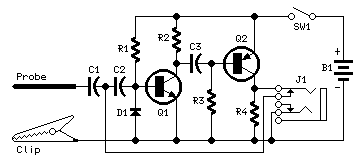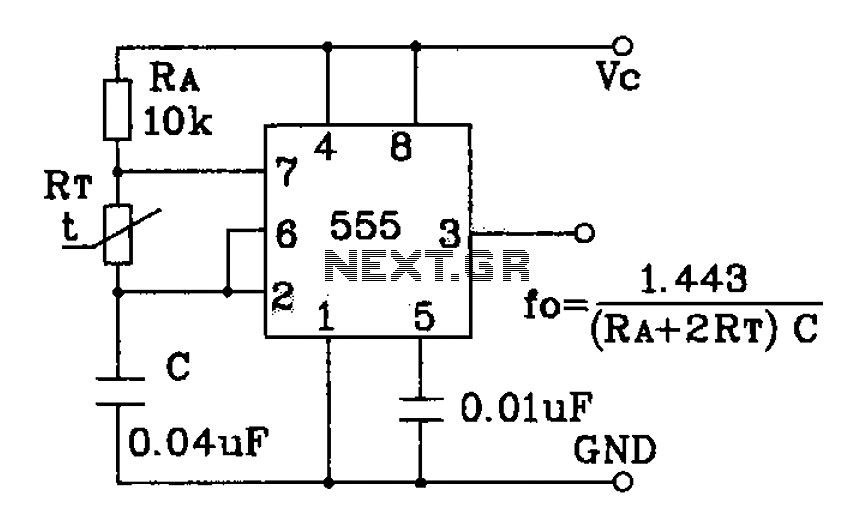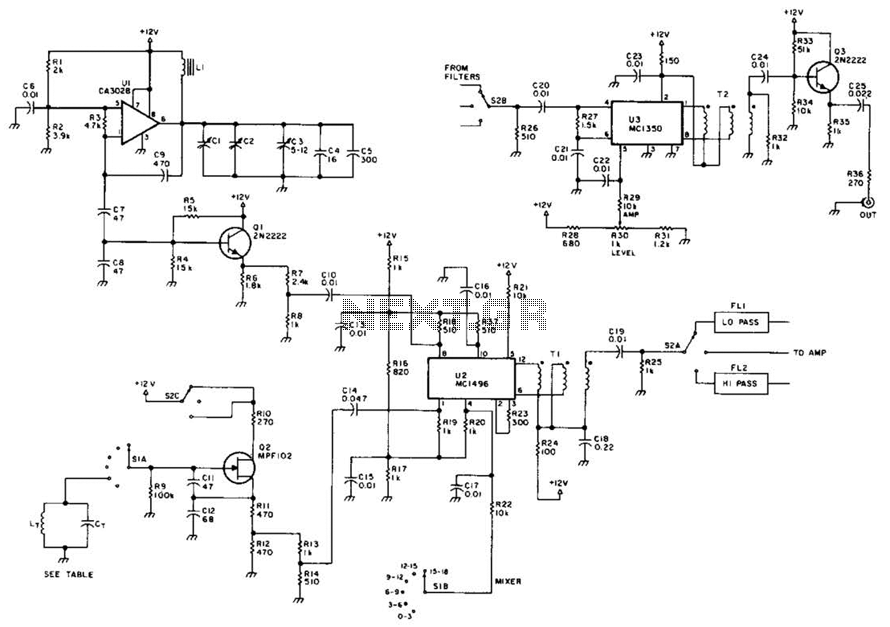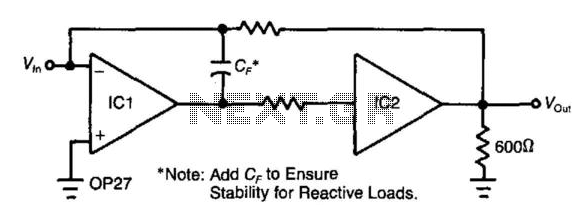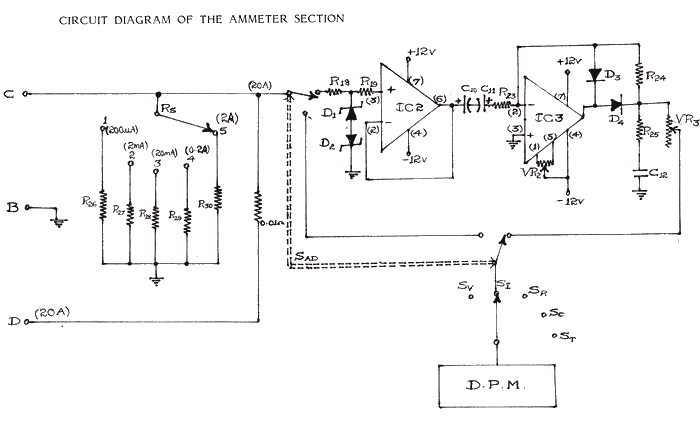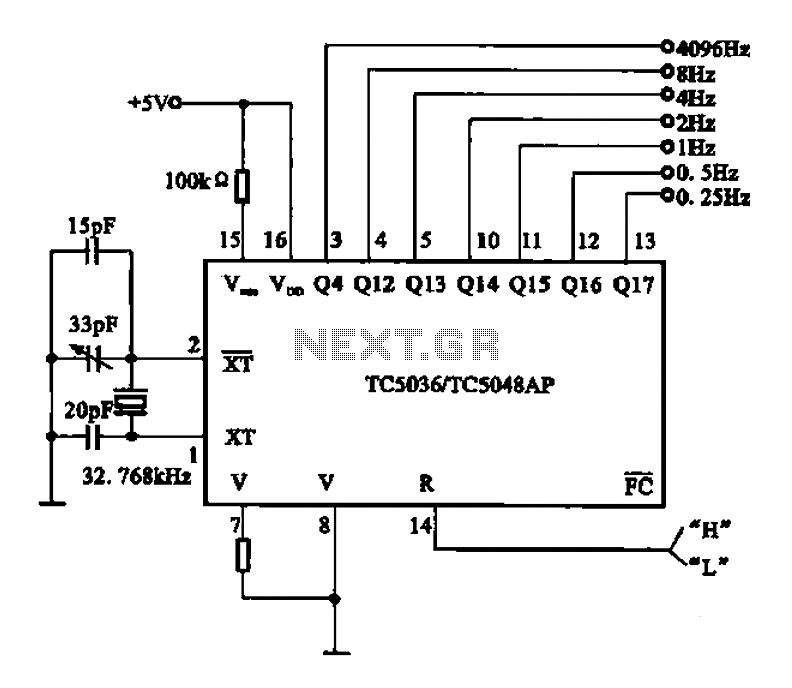
Precision RTD signal conditioner
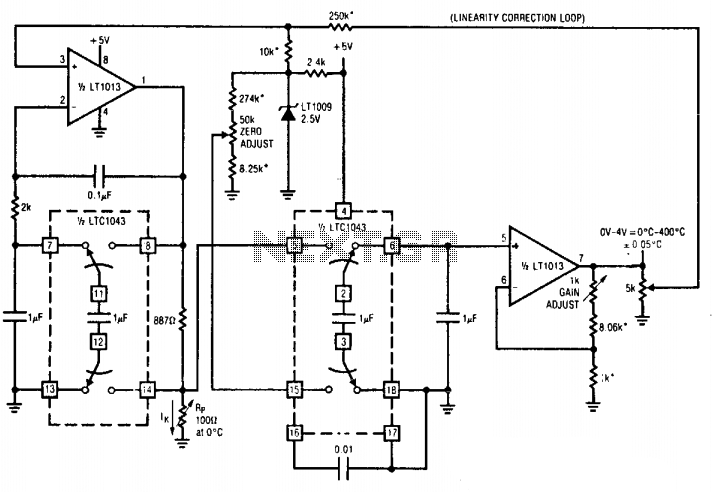
The circuit provides complete, linearized signal conditioning for a platinum RTD. This LTC1043-based circuit is considerably simpler than instrumentation or multi-amplifier based designs and operates from a single 5 V supply. Amplifier A1 serves as a voltage-controlled, ground-referred current source by differentially sensing the voltage across the 998 ohm feedback resistor. The LTC1043 section, which performs this function, presents a single-ended signal to A1's negative input, thereby closing the loop. The 2 kΩ and 0.1 µF combination sets the amplifier roll-off well below the LTC1043's switching frequency, ensuring stability. Because A1's loop maintains a fixed voltage across the 887 ohm resistor, the current through the resistor Rp remains constant. A1's operating point is primarily set by the 2.5 V LT1009 voltage reference.
This circuit design effectively utilizes the LTC1043 integrated circuit to achieve precise signal conditioning for platinum resistance temperature detectors (RTDs). The simplicity of this configuration, compared to more complex instrumentation amplifiers or multi-amplifier setups, allows for efficient signal processing while maintaining accuracy in temperature measurement applications.
The LTC1043, a precision analog switch, is central to this circuit, enabling the differential sensing of voltage across a feedback resistor of 998 ohms, which is critical for establishing the desired gain and linearity. The operational amplifier A1 functions as a current source, with its output directly influenced by the voltage across the feedback resistor. This feedback mechanism ensures that the output signal remains stable and linear, crucial for applications where temperature accuracy is paramount.
The combination of a 2 kΩ resistor and a 0.1 µF capacitor creates a low-pass filter that effectively rolls off high-frequency noise, ensuring that the operational amplifier's output remains stable and free from unwanted oscillations. This design choice is particularly important in environments where electromagnetic interference may be present.
The fixed voltage across the 887 ohm resistor, maintained by the feedback loop, ensures a constant current through the resistor Rp, which is essential for maintaining the integrity of the signal being processed. The LT1009 voltage reference provides a stable 2.5 V reference point that sets the operating conditions for A1, further enhancing the precision of the circuit.
Overall, this circuit design is well-suited for applications requiring accurate temperature measurement and signal conditioning, leveraging the capabilities of the LTC1043 and supporting components to achieve reliable performance.The circuit provides complete, linearized signal conditioning for a platinum RTD. This LTC1043 based circuit is considerably simpler than instrumentation or multi-amplifier based designs, and will operate form a single 5 V supply. Al serves as a voltage-controlled ground referred current source by differentially sensing the voltage across the 998 phm feedback resistor.
The LTC1043 section which does this presents a single-ended signal to Al's negative input, closing a loop. The 2 k 0.1 µ combination sets amplifier roll-off well below the LTC1043's switching frequency and the configuration is stable. Because Al's loop forces a fixed voltage across the 887 ohm resistor, the current through Rp is constant.
Al's operating point is primarily fixed by the 2.5 V LT1009 voltage reference. 🔗 External reference
This circuit design effectively utilizes the LTC1043 integrated circuit to achieve precise signal conditioning for platinum resistance temperature detectors (RTDs). The simplicity of this configuration, compared to more complex instrumentation amplifiers or multi-amplifier setups, allows for efficient signal processing while maintaining accuracy in temperature measurement applications.
The LTC1043, a precision analog switch, is central to this circuit, enabling the differential sensing of voltage across a feedback resistor of 998 ohms, which is critical for establishing the desired gain and linearity. The operational amplifier A1 functions as a current source, with its output directly influenced by the voltage across the feedback resistor. This feedback mechanism ensures that the output signal remains stable and linear, crucial for applications where temperature accuracy is paramount.
The combination of a 2 kΩ resistor and a 0.1 µF capacitor creates a low-pass filter that effectively rolls off high-frequency noise, ensuring that the operational amplifier's output remains stable and free from unwanted oscillations. This design choice is particularly important in environments where electromagnetic interference may be present.
The fixed voltage across the 887 ohm resistor, maintained by the feedback loop, ensures a constant current through the resistor Rp, which is essential for maintaining the integrity of the signal being processed. The LT1009 voltage reference provides a stable 2.5 V reference point that sets the operating conditions for A1, further enhancing the precision of the circuit.
Overall, this circuit design is well-suited for applications requiring accurate temperature measurement and signal conditioning, leveraging the capabilities of the LTC1043 and supporting components to achieve reliable performance.The circuit provides complete, linearized signal conditioning for a platinum RTD. This LTC1043 based circuit is considerably simpler than instrumentation or multi-amplifier based designs, and will operate form a single 5 V supply. Al serves as a voltage-controlled ground referred current source by differentially sensing the voltage across the 998 phm feedback resistor.
The LTC1043 section which does this presents a single-ended signal to Al's negative input, closing a loop. The 2 k 0.1 µ combination sets amplifier roll-off well below the LTC1043's switching frequency and the configuration is stable. Because Al's loop forces a fixed voltage across the 887 ohm resistor, the current through Rp is constant.
Al's operating point is primarily fixed by the 2.5 V LT1009 voltage reference. 🔗 External reference
